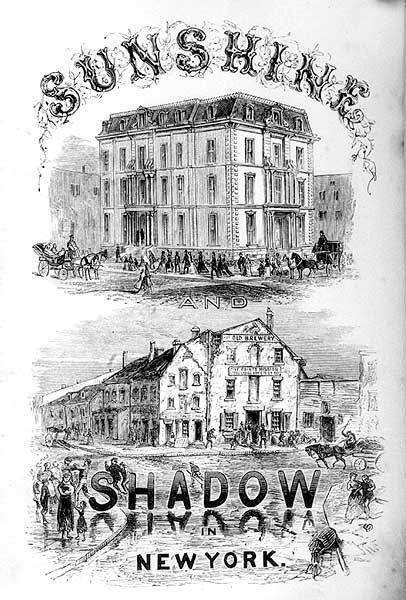talking history | syllabi | students | teachers | puzzle | about us
Sunshine and shadow.
Rising immigration and increasing social stratification affected the development of American cities during the mid-nineteenth century. City guides, delineating the mysteries of the metropolis, as well as newspapers, magazines, and novels presented the East’s industrializing cities—New York, Philadelphia, and Baltimore—as fractured societies. According to these publications, each was really two cities: one orderly, prosperous, and bathed in “sunlight,” the other menacing, poor and steeped in “darkness” (or “gaslight”). In this frontispiece from the 1868 Sunshine and Shadow in New York, the symbolic extremes of day and night were represented by a Fifth Avenue mansion and the Old Brewery, an infamous “thievesí den” located in the Five Points slum district.

Source: Matthew Hale Smith, Sunshine and Shadow in New York (1868)—American Social History Project.
